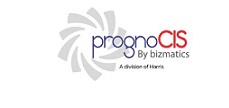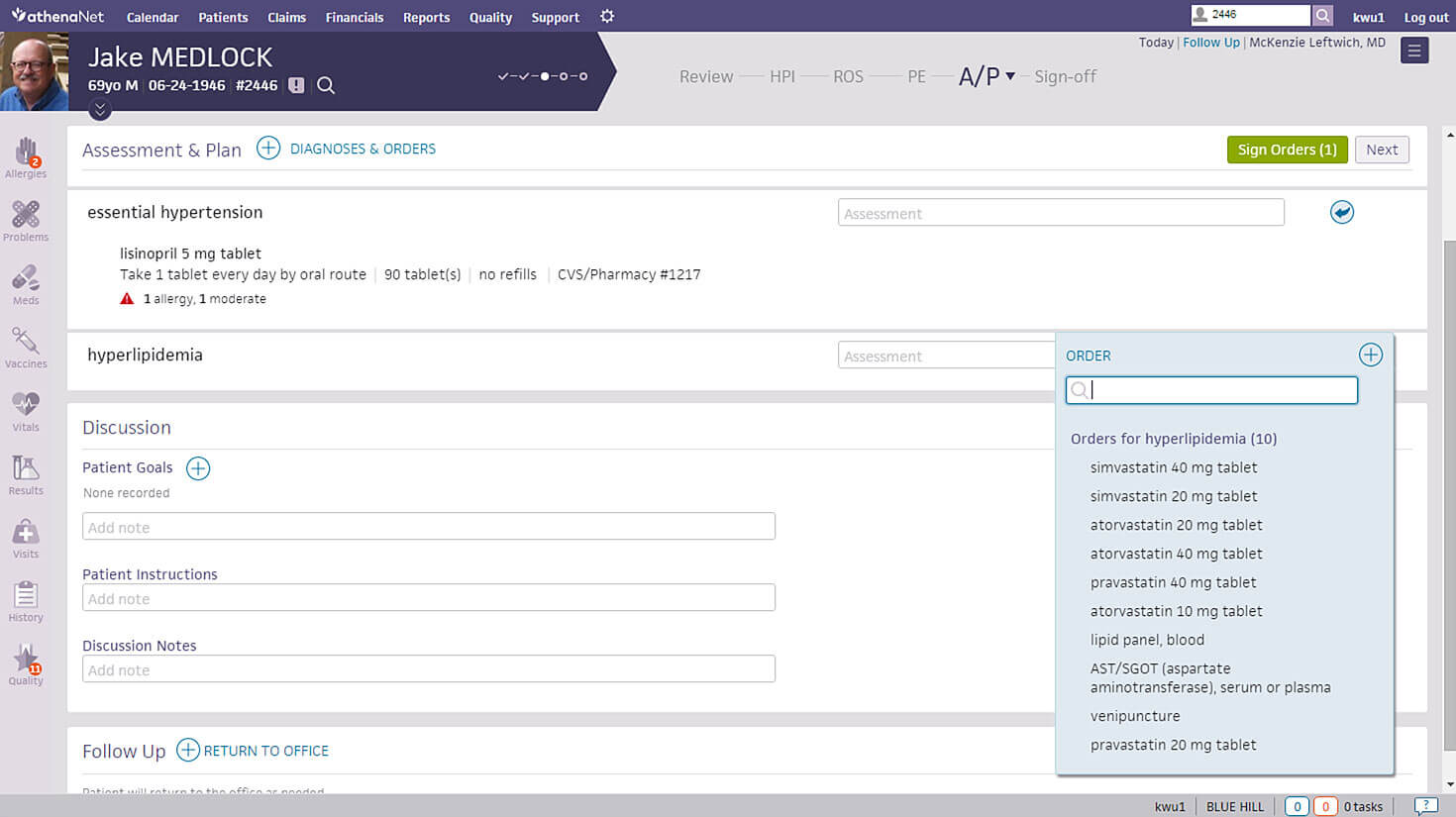What is a General Practitioner EHR Software?
A general practitioner Electronic Health Records Software is specifically designed to meet the unique needs of a general practitioner so he/she is able to diagnose and treat chronic diseases. A GP needs to be very efficient to provide cautionary information to the patients and a good general practitioner EHR software supports this.
A general practitioner’s EMR Software needs to have an intuitive interface and should be able to integrate seamlessly with diagnostic equipment, labs, and pharmacies.
Features of a General Practitioner EHR Software
The following features and tools are essential for general practice EHR software.
Lab integrations – The Electronic Health Records software should provide connectivity with major labs so that lab orders and test results can be sent and received automatically and updated in the patient records immediately.
Intelligent Patient Workflows – The most effective general practitioner EHR software solution provides tracking of patient workflows in real-time.
Templates and Order sets – A good general practitioner Electronic Health Records solution will allow GPs to build order sets and templates as they treat the patient. These order sets can be reused for patients with similar diagnoses saving time and hence speeding up clinical encounters.
Integration – with labs, pharmacies, and equipment
Intuitive and User-Friendly Interface – An intuitive interface design will allow minim clicks and screen openings to save the GPs time and effort.
Factors of a General Practitioner EHR Software
Before making the final choice you must consider the three main factors which should support your ultimate software purchase decision.
Architecture – Vendors provide cloud and server-based solutions. You need to make the right pick for yourself. If you want accessibility and flexibility of taking your practice on the go you will be more inclined towards cloud solutions.
Practice Size – Not every EHR vendor will be a viable option for you. Some EHR software solutions are specifically designed for solo provider practices while others may be better for large practice setups with more robust features of scheduling and integrations.
Certifications – A top-ranked Electronic Medical Records (EMR) software offers security and protection through certifications like ONC-ATCB and should guarantee HIPAA compliance. Good EMR vendors use data encryption technologies to protect from potential cyber-attacks.
What You Need To Know About EHR Software
Overview
Electronic Medical Records Software or commonly referred to as EHR Software represents the electronic method of storing medical records for patients. Using specially designed software, physicians and other medical professionals can store anything ranging from patient demographics to extensive clinical information about patients, such as medical history, social history, lab reports, and more.
EMR Software by Specialty
Since all medical providers (MDs, DOs, PAs, NPs, LCSW, OT, etc.) work in a distinct manner based on their background and medical specialty, EMR Software or EHR Software must accommodate the unique style and documentation requirements. Examples of such specialty-specific features include the ability to annotate on images or the capability to store before/after photos for Pain Management specialists and Dermatology specialists respectively. Similarly, other specialties such as Pediatrics, Oncology, Podiatry, Ophthalmology, Neurology, Nephrology, Dialysis Centers, Rheumatology, and Chiropractic Care require their unique set of specialty-specific features to simplify adoption.
Meaningful-Use
Since the introduction of the HITECH Act, healthcare IT has undergone a massive transition starting from the widely recognized Meaningful Use program to what is now known as MACRA, the Medicare EMR Incentive Program. The Meaningful Use program has transformed and now formed part of the four components of the new Merit-Based Incentive Payment System (MIPS), which itself is a fundamental part of MACRA.
For some medical practices, the transition from paper-based records to EMR Software (Electronic Medical Records Software) has not been a simple one. Regardless, realizing that the benefits of utilizing ONC Certified EMR Software far outweigh the hassle and challenges associated with it – ensuring a viable future, most practices today have successfully transformed their clinical and administrative operations to EHR Software.
EMR Software Benefits
Aside from ensuring tangible financial incentives and profitability, practices converting to EMR / EHR Software have seen the following benefits:
EMR Software Requirements by Practice Size
Just like a medical specialty, EHR Software requirements also depend on the size of the medical practice. From solo-provider clinics to large multi-provider, multi-specialty clinics, every practice has unique inherent challenges that must be addressed by the EMR Software vendor.
Small or Solo Provider Practices
A small doctor’s office not only has a limited number of staff members but their EMR Software budgets are also extremely low compared to a large enterprise such as a hospital. Due to these budgetary constraints, many providers simply choose to employ Free EMR Software or choose an affordable EHR Software vendor with a low fixed monthly fee. Cloud-based access is one such important requirement so that these providers can access patient charts even from home when needed.
Medium-Sized Practices
These practices usually consist of 5 to 10 medical providers often belonging to the same medical specialty. Their requirements are more stringent, and their budget is also considerably large. Aside from specialty-focused requirements (EHR Software by Specialty), these practices also require unique features such as interoperability, dedicated customer support, multi-device support as well as extensive reporting functionality to keep an eye on the overall performance of the practice.
Large practices
Larger group practices generally comprise more than fifteen or often twenty medical providers. These practices usually provide medical services that fall under various medical specialties (Orthopedics, Pain Management, Surgery, Chiropractic Medicine, Family Medicine, etc.). Therefore, these practices require support for multiple users to access the system simultaneously, as well as for the Scheduling software to accommodate multiple locations, providers, and resources such as Dialysis Chairs, procedure room allocation, etc. These practices also keep replacing or adding staff members and need a scalable solution.
Hospitals or enterprise organizations
EMR software companies such as Epic, Cerner, AllScripts, NextGen, Athenahealth, IMS by Meditab, eClinicalWorks, Meditech, McKesson, MEDHOST, etc. usually target and provide solutions for larger corporations like Hospitals, ACOs, PCMH, IPAs, CINs (Clinically Integrated Networks), Public Health Departments, etc.
These customers have the most elaborate list of requirements, which are usually documented in the form of an RFI or RFP to assess and shortlist vendors that can meet them. The requirements consist of features like inventory management modules, interface with local labs (LIS), machines and diagnostic equipment along with drug dispensing (pharmacy management software) and electronic medication administration records (EMAR), etc.
These entities also require the EHR software also need to integrate with multiple other software and medical devices.
Why does your practice need EMR Software?
Since the introduction of Meaningful Use, most healthcare practices simply have little or no choice but to convert their practice operations to EHR software. However, most providers today select the EHR software of their choice that best suits their specific needs and must perform an extensive search to evaluate all available options before they find one that is suitable. Most potential EMR Software buyers in the market today have the following in common:
- Do not know what they are looking for
- Know exactly what they want but don’t know where to start or find it
- Relying on advice from colleagues using EMR software already
Although #3 is ideal, every provider and their practice workflow are unique and therefore what works for one provider may not suit the other. “One size fits all” simply doesn’t apply in the world of healthcare IT. Software experts and industry specialists are an ideal source of information, advice and ultimately ensuring that the right decision is made.
Market Trends to Be Aware Of
Like anything else, the EMR software industry is also subject to constant changes. From new technology to legalities and governing bodies, everything is constantly changing. Here are some of the changes I think it would do well for you to keep track of.
Cloud-Based Services
Recent research found that only 25% of practitioners are interested in a web-based model and only 50% are willing to have it as an initial model that eventually transitions to cloud-based. Cloud-based EMR software cuts down on steep upfront costs for client servers and can be hosted on any device that has a web browser. It’s no surprise that more and more vendors are transitioning to cloud-based software because the industry demands are changing. The move to the public cloud for healthcare is vital in the current changing landscape. For practices that don’t adopt new cloud services, the old inferior feature set coupled with the higher prices will hinder the business dramatically. This gulf between the old software and the new cloud-based software will only grow more exponentially as time goes on.
Meaningful Use Changes
The new measures aim to make the reporting and benchmark for reaching the required reports much easier and laxer than under Meaningful Use, along with other changes.
At a recent healthcare conference Andy Slavitt, the administrator of the Centers for Medicare & Medicaid Services declared that Meaningful Use was over, and would be replaced by the end of this year with something better. But a deeper look into the claims revealed that meaningful use would very much still be there, only much improved.
As the CMS has officially renamed Meaningful Use to “Promoting Interoperability” as of 2025, it’s important to understand its updated principles. Effective interoperability of healthcare data will ensure that electronic health information is shared properly between healthcare and public health partners in the right format and at the right time. Starting in 2022, the CMS requires all eligible healthcare services to implement upgraded versions of EHR software that utilize this updated definition.












